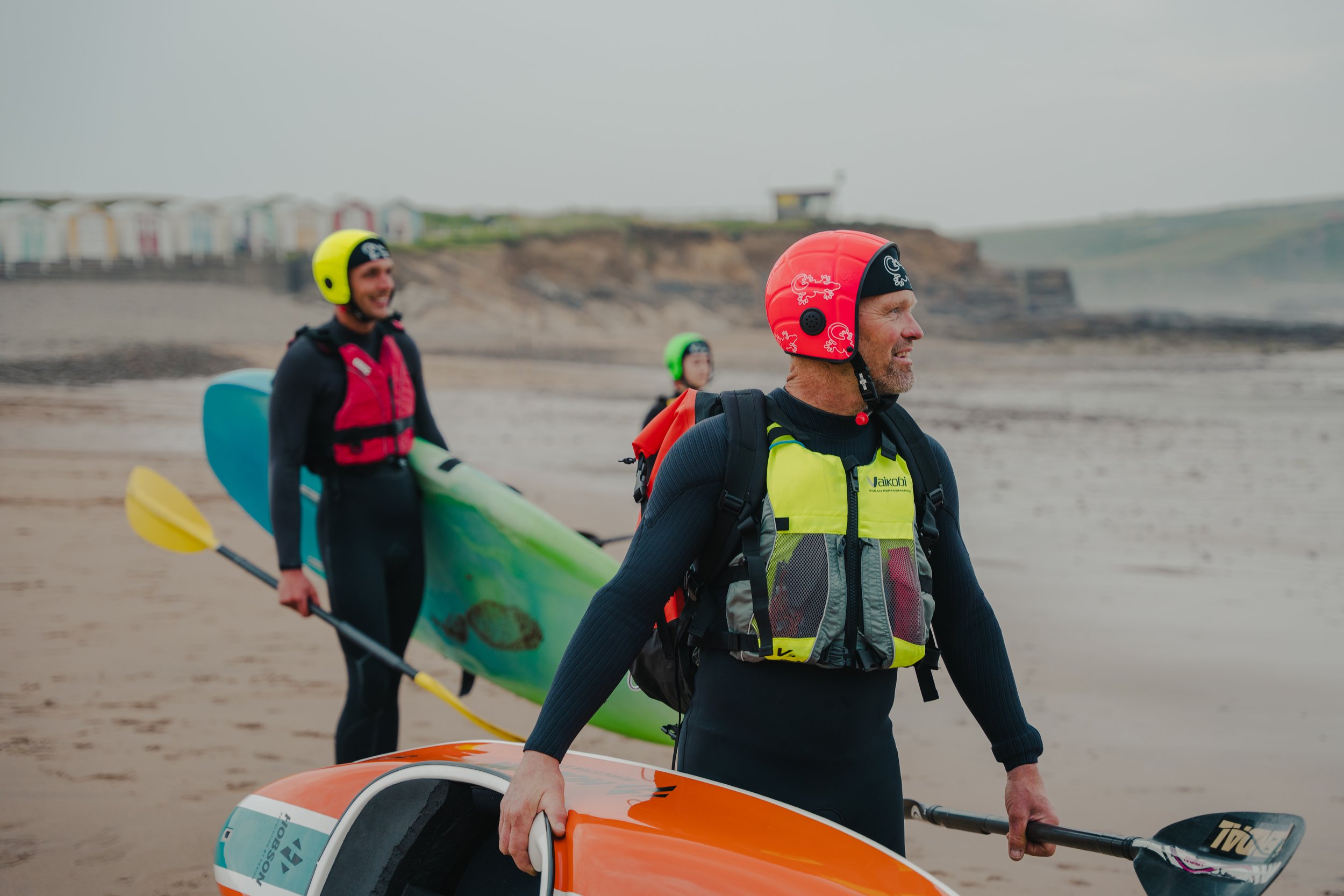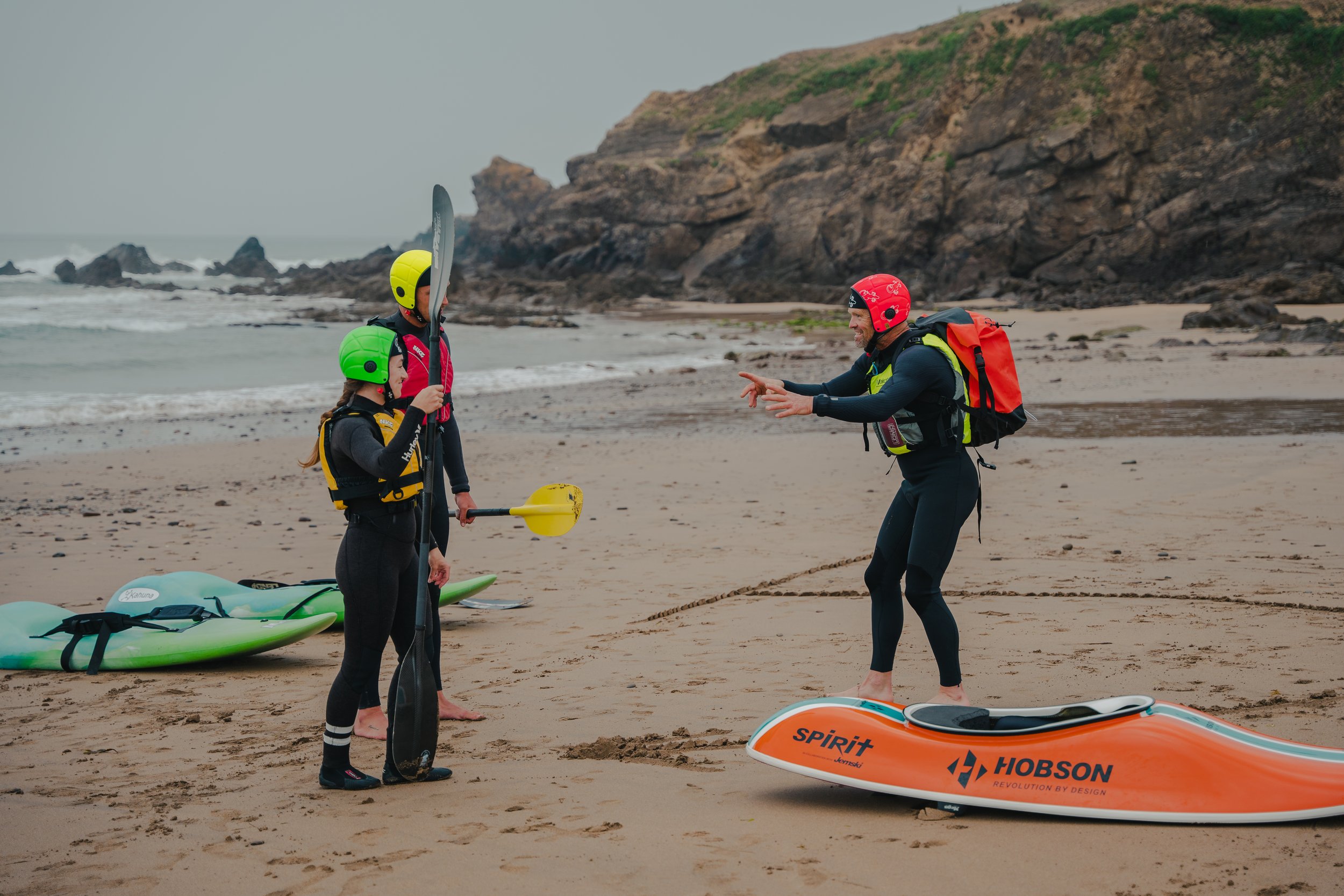Why wear a helmet for surfing & watersports?
Why protect your head?
Head injuries are dangerous because they can affect the brain in a multitude of ways. A traumatic brain injury (TBI) refers to damage to the brain caused by an external physical force such as a collision, being struck by a falling object, or a fall. The brain is made up of extremely delicate soft tissue which floats in fluid within the skull. When there is sudden speeding up or slowing down, such as in a collision or fall, the brain can move around violently inside the rigid skull, resulting in injury.
While immediate and diagnosable brain injuries like TBI are most commonly associated with sporting accidents, there is another condition that can be caused by regular exposure to minor head traumas that is much less understood. Known as Chronic Traumatic Encephalopathy (CTE) or ‘Boxers Brain’, this is a degenerative brain disease that is found in athletes, military veterans, and others with a history of repetitive brain trauma, where symptoms can appear many years after the traumas have taken place. In CTE, a protein called Tau forms clumps that slowly spread throughout the brain, killing brain cells and causing symptoms that can affect a patient’s mood and behaviour. Some common changes observed include impulse control problems, aggression, depression, and paranoia. As the disease progresses, some patients may experience problems with thinking and memory, including memory loss, confusion, impaired judgment, and eventually progressive dementia.
So how does a helmet protect your head?
A helmet is designed to keep expected impacts for a given activity within the range of human brain tolerance, by preventing objects from penetrating the shell and absorbing impact energy. The energy absorption properties tend to be within a layer of crushable foam lining the helmet and when exposed to an external force this foam part of the helmet crushes as the impact energy is absorbed.
This may often mean that following a collision parts of the helmet will show visible damage while the wearer escapes injury. Even when no damage is visible to a helmet following a significant impact, it is advisable to replace the helmet anyway as the internal structures may be compromised – and for this reason, you should never buy a second-hand helmet.

What does ‘Fit for Purpose’ mean?
Helmets are designed with a specific activity in mind allowing for the design of the helmet to take into account and protect against a range of ‘likely impacts’ for that activity. Take whitewater kayaking for example; EN 1385 is the widely recognised helmet standard for whitewater sports and it is primarily designed to protect the wearer from hitting their head on rocks when travelling at speeds up to 11 mph, the highest recorded speed of whitewater flow. In contrast, a powerboat user might be travelling at speeds similar to that of a motorcycle user, 70 mph or more, so they will require significantly more impact protection from their helmet. The next section goes into more detail about what impact forces helmets are subjected to in a testing environment to mimic the ‘likely impacts’ for a range of different activities.
Fit for purpose goes beyond simply selecting an appropriate level of protection for your head, you’ll also want to know that your helmet is suitable for the intended environment in other ways – so for example, a marine helmet shouldn’t degrade following saltwater exposure and it shouldn’t become negatively buoyant when wet – and a motorcycle helmet shouldn’t be too heavy or it might injure the wearers neck when travelling at speed. Fit for purpose is about having a helmet that is optimised to perform in its intended environment.
Safety Certifications Explained
The British Standards Institute (BSI) have over the years developed a range of standards to certify helmets to be fit for a number of purposes; marine safety helmets (PAS 028), industrial safety helmets (EN 397), motorcycle helmets (BS 6658), alpine skiers helmets (EN 1077), mountaineering helmets (EN 12492) and white-water sports helmets (EN 1385).
These certifications require the helmets approved by them to pass a range of controlled tests that mimic the likely impacts that they need to protect the user from. The standards were, however, not developed in sync with one another and as a result, the testing measures and performance requirements vary between standards. It is possible to compare one test across the board and it is the most significant test because it measures the impact absorption quality of the helmet, mimicked by a falling headform in a ‘drop test’. The graph shows the impact energy in Joules that each of these types of helmets are required to protect the wearer from in order to meet the standard.

So why Gecko Head Gear?
Gecko Head Gear were pioneers in developing the BSI marine safety helmet standard PAS 028, in collaboration with the Royal National Lifeboat Institution (RNLI), Metropolitan Police Service and Ministry of Defence Police; because all these organisations had identified a need for a marine appropriate helmet standard for users of fast motorised watercraft.
The PAS standard combines the maximum level of head protection (as provided by mountaineering equipment helmets) with the marine appropriate features of the white-water sports helmet such as positive buoyancy and rust resistant parts.
Besides the consultees of PAS 028, numerous organisations worldwide now use Gecko Head Gear’s PAS 028 certified helmets including the British Navy, the Royal Air Force, Gibraltar Police, the German Navy, the German Coastguard, Hong Kong Police and Fire Services, the Canadian Coastguard, the French Coastguard and the Australian Navy. In fact, in 2014 a government backed ruling was passed in Germany that allowed their coastguard and rescue organisations to make repeat purchases of their Gecko Head Gear without putting the purchase back out to tender because they recognised that there was no comparable safety accreditation or product elsewhere in the market.
Andrew Cotton - Professional Big Wave Surfer
“I’ve been using Gecko helmets for that last few years now, for me it’s the ultimate surf helmet, it’s not only super comfortable and gives me extra confidence when the waves get dangerous it’s also compatible with the coms headsets I use on the biggest tow surfing days which is amazing for me and my safety team. ”
Corky Kirkham - Professional Wind Surfer
“I’ve been wearing Gecko Head Gear for some 12 years. The helmet gives insane protection from volcanic rocks here on Fuerteventura, plus I take regular knocks from my mast boom and other bits while trying new manoeuvres. The lids also protect from UV rays when sailing for long hours in hot places. Super strong, super light and the new inflatable lining is super comfortable!”
Al Mennie - Professional Big Wave Surfer





